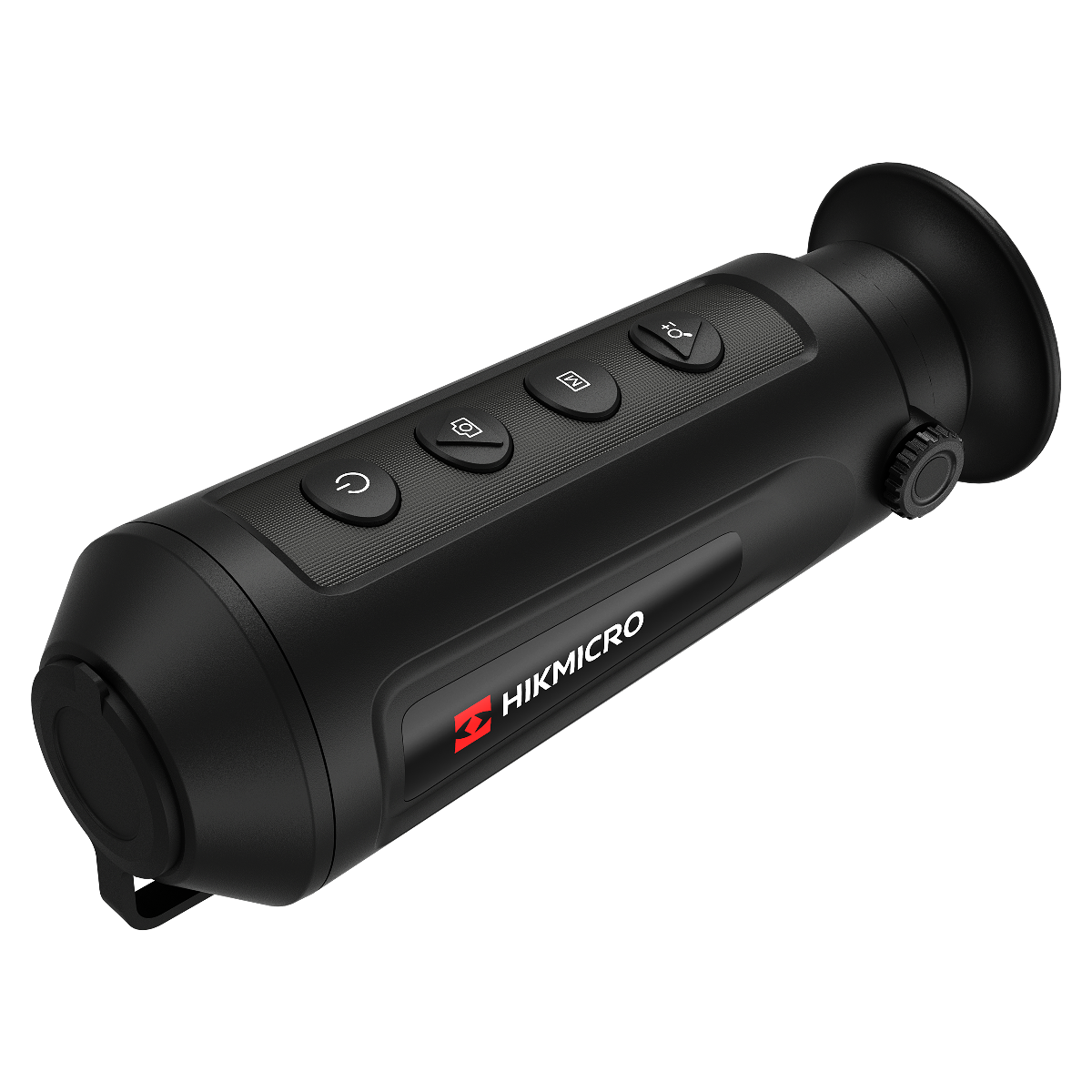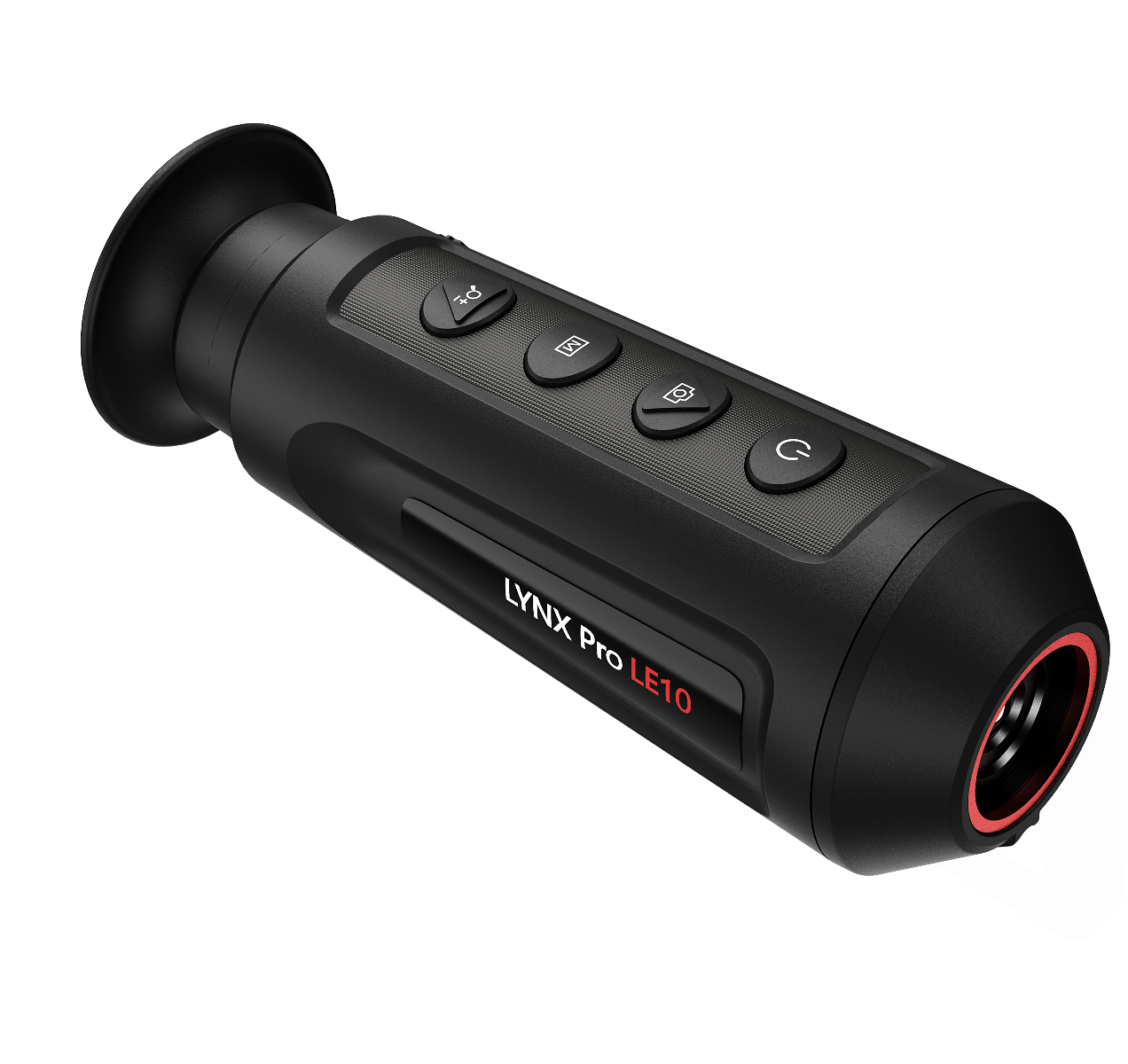Product Description
HIKMICRO Lynx PRO LE10S 10mm Smart Thermal Monocular – Advanced Thermal Imaging at an Accessible Price
The HIKMICRO Lynx PRO LE10S thermal monocular delivers exceptional performance in a compact, lightweight design, making it the perfect companion for hunters, wildlife enthusiasts, and outdoor professionals. Combining an advanced thermal sensor, long detection range, and smart features, this monocular brings professional-grade thermal imaging to an entry-level price point.
Key Features
- High-Resolution Thermal Sensor: 256 x 192 @ 12µm sensor for detailed thermal imaging.
- Wide Detection Range: Detects heat signatures at up to 450m (human-sized targets).
- Precision Detection: Sub-35 NETD sensor for excellent temperature differentiation, even in harsh conditions.
- Multiple Colour Palettes: Choose from White Hot, Black Hot, Red Hot, and Fusion for optimal contrast in different environments.
- Video Recording & WiFi: Record and share images or videos via onboard memory or the T-Vision app.
- Fixed-Focus Lens: 10mm focal length with a wide field of view for quick and easy scanning.
- Durable Build: IP67-rated for dust and water resistance, suitable for all-weather use.
- Long Battery Life: Up to 8 hours of continuous use with WiFi and tracking disabled.
Technical Specifications
Main Sensor & Optics
- Sensor: 256 x 192 pixels, 12µm pitch, VOx uncooled FPA.
- NETD: <35mK for sensitive heat detection.
- Frame Rate: 25Hz for smooth thermal imaging.
- Objective Lens: 10mm, F1.0 aperture.
- Magnification: 1x optical, 1x/2x/4x/8x digital.
- Field of View: 18.00° × 13.55°.
Display
- Type: LCOS, 720 x 540 resolution.
- Colour Palettes: White Hot, Black Hot, Red Hot, Fusion.
Recording & Connectivity
- Video Recording: 8GB internal memory.
- WiFi Connectivity: Compatible with T-Vision app for real-time sharing and control.
Environmental Specifications
- Operating Temperature: -20°C to 55°C.
- Waterproof & Dustproof: IP67-rated, protected against water submersion and dust ingress.
Battery & Power
- Battery Life: Up to 8 hours of continuous use.
- Charging Interface: USB-C.
- Battery Longevity: Retains 80% capacity after 1000 cycles.
Weight & Dimensions
- Weight: 0.26kg.
- Dimensions: 158mm x 61mm x 57mm.
Why Choose the HIKMICRO Lynx PRO LE10S?
- Affordable Performance: Entry-level pricing with advanced thermal imaging features.
- Compact & Lightweight: Easy to carry and operate during long sessions.
- Smart Features: WiFi, video recording, and multiple colour palettes for versatile use.
- Robust Design: Durable and weatherproof for reliable performance in any environment.
Applications
- Wildlife Observation: Spot small animals like rabbits, squirrels, and birds with precision.
- Search & Rescue: Detect heat signatures in challenging conditions.
- Security & Surveillance: Monitor wide areas effectively, even in low visibility.
Explore with Confidence
The HIKMICRO Lynx PRO LE10S 10mm Smart Thermal Monocular is a versatile tool that combines precision, durability, and affordability. Whether for professional or recreational use, this monocular delivers high-quality thermal imaging for a variety of applications.
Order yours today and experience the power of thermal imaging at your fingertips!
* Please note the cover is now not included (September 2025).
Payment & Security
Your payment information is processed securely. We do not store credit card details nor have access to your credit card information.


















